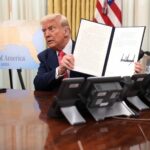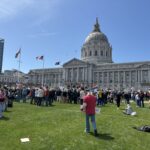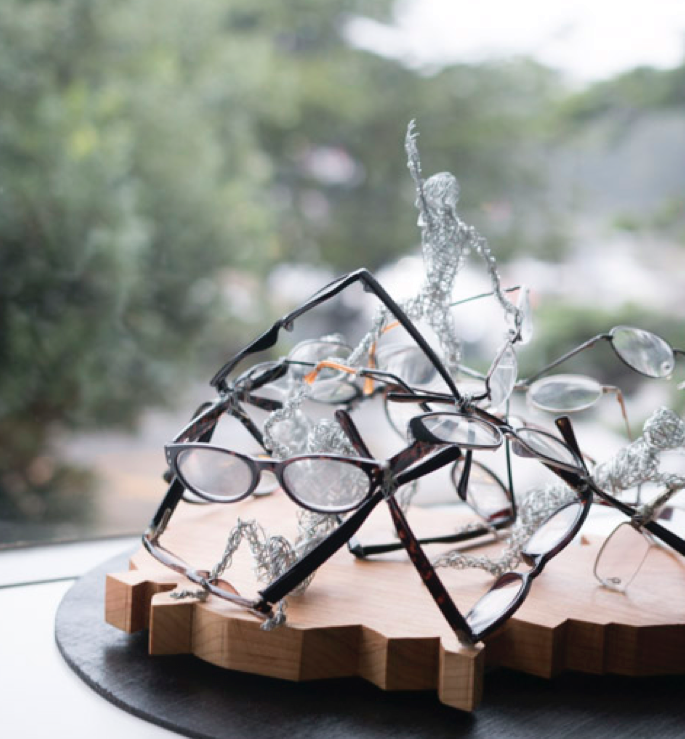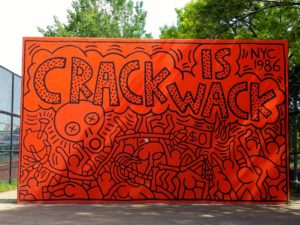
photo by J.D. LeRoy
Background: From 1975 to 1979 the government of Democratic Kampuchea, led by Pol Pot, committed a genocide resulting in the death of approximately one quarter of the nation’s seven million inhabitants.
After nearly a century of French colonial rule, Cambodia gained independence in 1954 under Prince Norodom Sihanouk. As corruption and economic struggles plagued Sihanouk’s Cambodia, the Cambodian communist group known as the Khmer Rouge (KR) gained support and initiated a rebellion. Once in power, the Khmer Rouge began to implement their vision of an agrarian society free of foreigners, ethnic minorities, and intellectualism—a pure society made up entirely of ethnic communist Khmers. The regime created a national program of forced agricultural labor, emptying city populations into the countryside to work. Approximately two million people perished. They were either executed or died of starvation and disease resulting from the Khmer Rouge policies. The genocide ended when Vietnamese invaded Democratic Kampuchea and installed a new government.
Despite the horrors in Cambodia, the United States and the United Nations did not intervene or attempt to prevent genocide. In America, inaction was due to a general disbelief in the reports of genocidal policies in Cambodia, to the “Southeast Asia fatigue” brought on by the Vietnam War, and to Cold War geopolitical concerns. At the UN, no national delegation seriously fought for consideration of action in response to the genocide. The UN genocide convention was essentially useless, lacking both US support and any means of enforcing genocide prevention.
Artist’s Statement: Our sculpture “Twisted Humanity,” a memorial to the victims of the Cambodian Genocide (1975–1979) provides an artistic interpretation of the horrors and injustice of the Cambodian Genocide. Through the selection of materials and construction of historically significant symbols, the piece aims to elicit empithy in the viewer for the victims of the genocide and outrage at the suffering they endured.
One look at “Twisted Humanity” begs the question: why reading glasses? In Pol Pot’s Democratic Kampuchea, intellectuals and professionals were among the many groups executed en masse. The massacres became so widespread that a person could be killed for something as arbitrary as speaking a foreign language—or wearing reading glasses.
In our sculpture, the glasses’ convergent lenses offer a double meaning: they represent the farsighted eyes of an international community whose political expediencies and self-interest prevented them from looking too closely at Cambodia in the 1970s.
An examination of the piece as a whole reveals structural symbolism. Overt symbols include the elevated map of Cambodia and the “cage” of glasses that, like the Khmer Rouge regime, both trap the victims and repel foreign influence and help. A more subtle symbol is the circular base painted black: this “globe of darkness” again references a world which stood by in silence as millions of innocent people needlessly suffered.
The wire figures connect to this idea of global inaction; by constructing humans out of something as cold and lifeless as galvanized steel wire, the figures remind the viewer how easily the humanity of entire groups of people can be forgotten. The mutilated limbs and thin figures reference the disease and starvation that was commonplace under KR policies. The positions of each figure embody various emotions—they are fixed in states of extreme terror, agony, and desperation. The fourth figure is impaled through the abdomen, an image reminiscent of the mass executions by pickaxe in the killing fields. Lastly, the death of this fourth figure alludes to the egregious loss of one quarter of the Cambodian population.
The haunting message of this piece is best summarized through an analysis of its title. The term “twisted humanity” applies to three groups of people: the evil leaders who perpetrated genocide, the negligent international community who turned a blind eye, and the victims—wire humans literally twisted into tortured figures who embody, at least in part, the half decade of brutal forced labor, systematic torture, and mass killings that marked the Cambodian Genocide.





